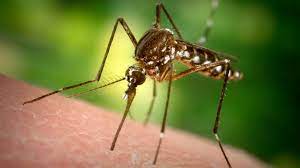What Are Genetically Modified Mosquitoes?

The US conducted an open-air study of genetically engineered mosquitoes which shows promising results.
- The aim of the study is to reduce the population of wild Aedes aegypti mosquitoes that are a vector for viruses such as chikungunya, dengue, zika and yellow fever.
- The mosquitoes had already been field-tested in Brazil, Panama, the Cayman Islands, and Malaysia, but no such study was conducted in the United States.
- GM mosquitoes are mass-produced in a laboratory to carry two types of genes:
- A self-limiting gene that prevents female mosquito offspring from surviving to adulthood.
- A fluorescent marker gene that glows under a special red light. This allows researchers to identify GM mosquitoes in the wild.
- GM mosquitoes produced in the laboratory lay eggs. These eggs carry the self-limiting and fluorescent marker genes.
- GM mosquito eggs that carry the self-limiting gene are released into an area. Once they have hatched and develop through to the adult stage, they are available to mate with wild females. The genes are passed on to offspring.
- The male mosquitoes have a protein (the tTAV-OX5034 protein) that prevents female offspring from surviving when male OX5034 mosquitoes mate with wild female mosquitoes.
- The female offspring die before they become adults. The expected result is that the number of Aedes aegypti mosquitoes in the area decreases.




